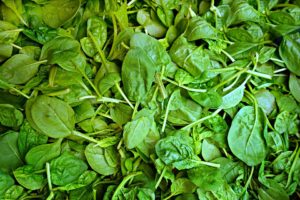OXALATES, COOKING, AND ABSORPTION
By Reed Mangels, PhD, RD
General nutrition advice indicates that greens with high oxalate content are not good sources of calcium, since the oxalate interferes with absorption. A reader asked if cooking would render the oxalic acid ineffective and not block absorption.
There are two kinds of oxalate in foods – soluble oxalate and insoluble oxalate. The insoluble oxalate is what binds with calcium so that neither the calcium nor the oxalate are absorbed. My review of the literature indicates that the soluble oxalate is more easily absorbed. Boiling vegetables decreases total oxalate content, primarily by loss of soluble oxalate. So, for example, even though there is a reduction in oxalate when spinach is boiled, much of that reduction is in soluble oxalate. Absorption of calcium from spinach is still low (~5%) apparently because insoluble oxalate content was not reduced markedly by boiling so it still formed a complex with calcium that prevented absorption of both calcium and oxalate. So, no, we can’t say that cooking renders the oxalate ineffective in terms of its ability to bind with calcium and prevent the calcium from being absorbed.
For vegan calcium sources, see https://www.vrg.org/nutshell/vegan.htm#calcium
and https://www.vrg.org/nutrition/calcium.php
The contents of this email, our website, and our other publications, including Vegetarian Journal, are not intended to provide personal medical advice. Medical advice should be obtained from a qualified health professional. We often depend on product and ingredient information from company statements. It is impossible to be 100% sure about a statement, info can change, people have different views, and mistakes can be made. Please use your best judgment about whether a product is suitable for you. To be sure, do further research or confirmation on your own.

